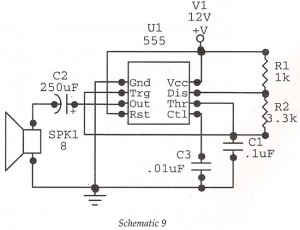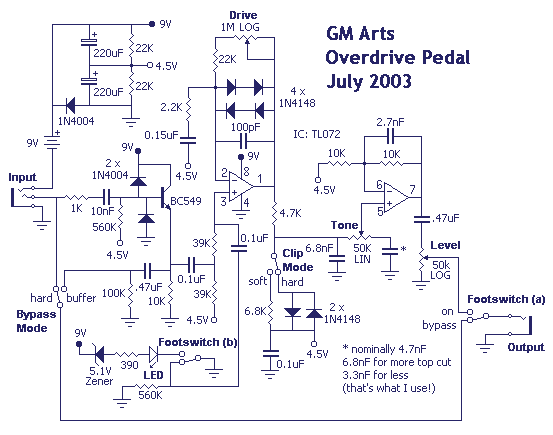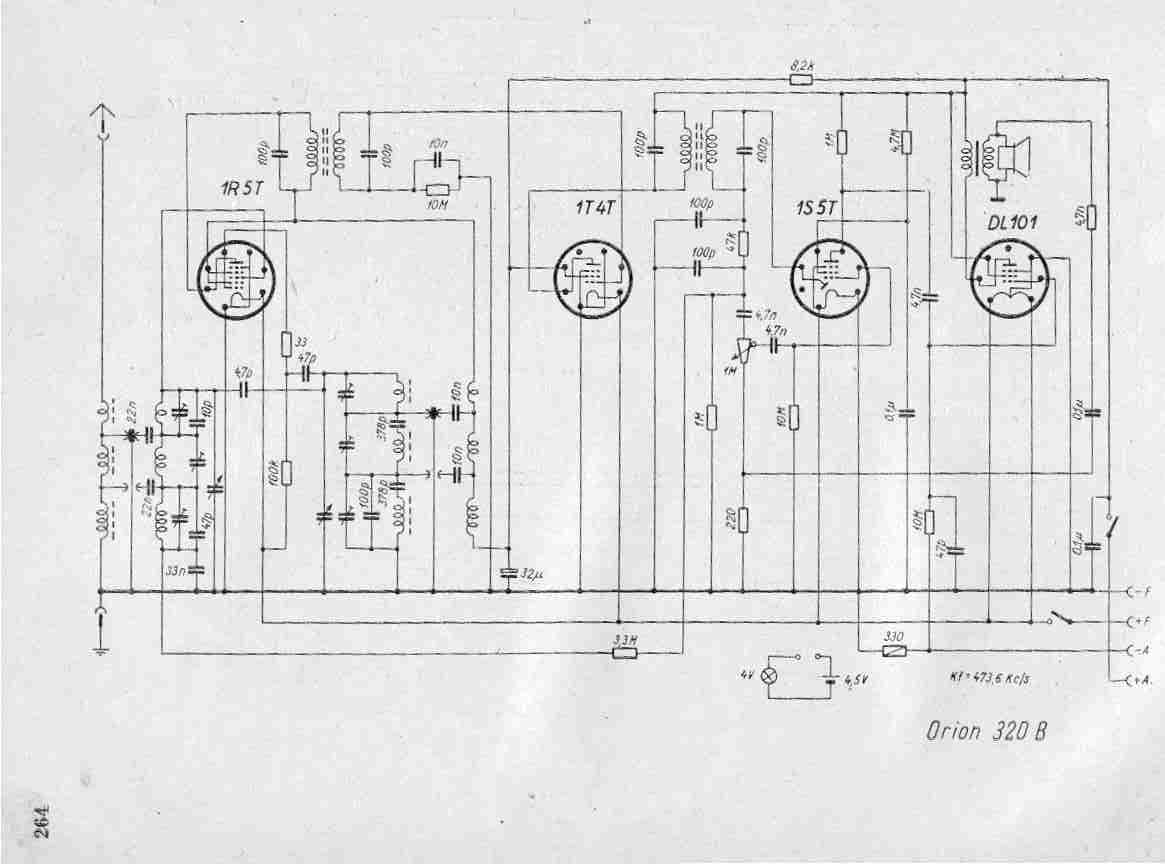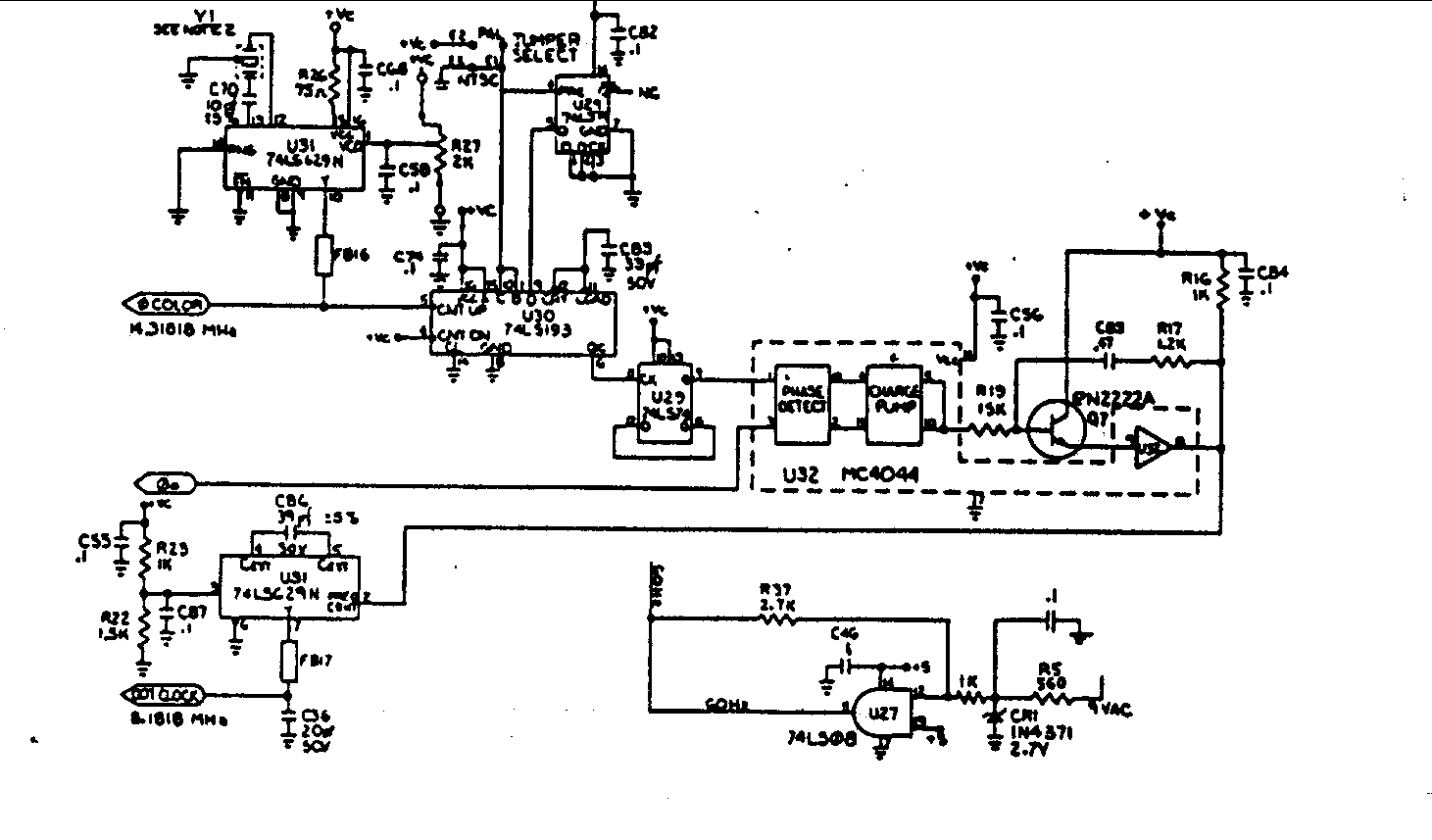
Basic Oscillator (Tone Generator) At 1.8 KHz -alarm circuits

This circuit features an astable oscillator constructed around a 555 timer, generating an alarm tone of 1.8 kHz, which directly drives a speaker. It serves as a fundamental alarm circuit that can be utilized in various projects. Although the circuit is designed to operate at 1.8 kHz, it can be modified for different applications by adjusting the frequency and duty cycle through the timing components. The circuit schematic identifies resistors R1, R2, and capacitor C as key components that determine the frequency; altering these values will change the output frequency. Additionally, the tone can be adjusted by modifying the capacitor connected to Pin 5 of the IC. To introduce modulation, a 10 kΩ resistor can be connected from the secondary of the transformer (before the rectifier) to Pin 5, causing the output to fluctuate at the mains frequency of 50 Hz. The output from Pin 3 is coupled to an 8-ohm speaker, and capacitor C2 is crucial for blocking any DC component. The frequency can also be varied by incorporating a preset potentiometer in the timing components or by changing the timing capacitor. Volume amplification can be achieved by using a transistor to boost the output signal. Construction of the circuit is straightforward, utilizing a small Vero board suitable for integrated circuits (ICs). It is recommended to mount the capacitors and resistors close to the board. C2 should be an electrolytic capacitor, and the IC should be securely fixed; if soldering skills are limited, using an IC base is advisable. To vary the tone, a 100 kΩ variable resistor (preset) can be soldered between the power supply and resistor R1, allowing for tone adjustments.
The astable oscillator circuit based on the 555 timer operates in a continuous oscillation mode, generating a square wave output. The frequency of oscillation is determined by the resistors R1 and R2, and the timing capacitor C. The formula for calculating the frequency (f) of the output square wave is given by:
\[ f = \frac{1.44}{(R1 + 2R2) \cdot C} \]
Where:
- R1 is the resistance connected between the discharge pin (Pin 7) and the threshold pin (Pin 6),
- R2 is the resistance connected between the threshold pin (Pin 6) and ground,
- C is the timing capacitor connected between the threshold pin (Pin 6) and ground.
The duty cycle of the output waveform can also be influenced by the values of R1 and R2, allowing for customization of the signal characteristics based on specific application requirements. The output at Pin 3 can be easily interfaced with an 8-ohm speaker, ensuring that the alarm tone is audible.
Capacitor C2 plays a vital role in preventing DC voltage from reaching the speaker, which could potentially damage it. The introduction of a potentiometer in the circuit allows for real-time adjustments to the frequency, providing flexibility in the alarm tone.
For enhanced volume output, a transistor can be integrated into the circuit to serve as an amplifier. The transistor should be configured in a common-emitter configuration to achieve the desired amplification.
Construction considerations include ensuring that all components are securely mounted on the Vero board, with attention to minimizing the lengths of connections to reduce signal degradation. Proper soldering techniques should be applied to ensure reliable electrical connections.
The design is versatile and can be adapted for various applications beyond alarm systems, such as tone generators or signal modulators, making it a valuable addition to an electronics project toolkit.Here we have an astable oscillator built around 555, which gives an alarm tone of 1. 8 KHz directly driving a speaker. This is basic alarm circuit, which is later used in many other projects in the book. While the circuit shows only 1. 8 KHz operation, it can be adapted to different applications by changing frequency and duty cycle after manipulatin g the timing components as per the formula. The circuit is shown in Schematic 9. Resistances Rl, R2, and capacitor C determine the frequency. Changing these values change the frequency. You can also manipulate the tone by changing the capacitor at Pin 5. You can modulate the tone also. Try connecting a 10 K resistor from secondary of the transformer, i. e. , before the rectifier and connect it to Pin 5, the Control terminal. Output will wobble at the mains frequency of 50Hz. Output at Pin 3 is coupled to the speaker of 8 ohms. The capacitor C2 is essential to block DC. You can also vary the frequency by adding a preset potentiometer in the in the timing components. Try changing the timing capacitor also. You can increase the volume by amplifying the output with a transistor. You will find such applications later. Construction is straightforward. Use a small Vero board suitable for ICs. Mount the capacitors and resistances close to the board. C2 is an electrolytic capacitor. IC should be fixed finally and if you have not got the skill of soldering well, use of IC base will be helpful. If you wish to vary the tone, solder 100K variable resistance (preset), between power supply and IK (Rl) and change the tone as you like it.
We aim to transmit more information by carrying articles. Please send us an E-mail to wanghuali@hqew. net within 15 days if we are involved in the problems of article content, copyright or other problems. We will delete it soon. 🔗 External reference
The astable oscillator circuit based on the 555 timer operates in a continuous oscillation mode, generating a square wave output. The frequency of oscillation is determined by the resistors R1 and R2, and the timing capacitor C. The formula for calculating the frequency (f) of the output square wave is given by:
\[ f = \frac{1.44}{(R1 + 2R2) \cdot C} \]
Where:
- R1 is the resistance connected between the discharge pin (Pin 7) and the threshold pin (Pin 6),
- R2 is the resistance connected between the threshold pin (Pin 6) and ground,
- C is the timing capacitor connected between the threshold pin (Pin 6) and ground.
The duty cycle of the output waveform can also be influenced by the values of R1 and R2, allowing for customization of the signal characteristics based on specific application requirements. The output at Pin 3 can be easily interfaced with an 8-ohm speaker, ensuring that the alarm tone is audible.
Capacitor C2 plays a vital role in preventing DC voltage from reaching the speaker, which could potentially damage it. The introduction of a potentiometer in the circuit allows for real-time adjustments to the frequency, providing flexibility in the alarm tone.
For enhanced volume output, a transistor can be integrated into the circuit to serve as an amplifier. The transistor should be configured in a common-emitter configuration to achieve the desired amplification.
Construction considerations include ensuring that all components are securely mounted on the Vero board, with attention to minimizing the lengths of connections to reduce signal degradation. Proper soldering techniques should be applied to ensure reliable electrical connections.
The design is versatile and can be adapted for various applications beyond alarm systems, such as tone generators or signal modulators, making it a valuable addition to an electronics project toolkit.Here we have an astable oscillator built around 555, which gives an alarm tone of 1. 8 KHz directly driving a speaker. This is basic alarm circuit, which is later used in many other projects in the book. While the circuit shows only 1. 8 KHz operation, it can be adapted to different applications by changing frequency and duty cycle after manipulatin g the timing components as per the formula. The circuit is shown in Schematic 9. Resistances Rl, R2, and capacitor C determine the frequency. Changing these values change the frequency. You can also manipulate the tone by changing the capacitor at Pin 5. You can modulate the tone also. Try connecting a 10 K resistor from secondary of the transformer, i. e. , before the rectifier and connect it to Pin 5, the Control terminal. Output will wobble at the mains frequency of 50Hz. Output at Pin 3 is coupled to the speaker of 8 ohms. The capacitor C2 is essential to block DC. You can also vary the frequency by adding a preset potentiometer in the in the timing components. Try changing the timing capacitor also. You can increase the volume by amplifying the output with a transistor. You will find such applications later. Construction is straightforward. Use a small Vero board suitable for ICs. Mount the capacitors and resistances close to the board. C2 is an electrolytic capacitor. IC should be fixed finally and if you have not got the skill of soldering well, use of IC base will be helpful. If you wish to vary the tone, solder 100K variable resistance (preset), between power supply and IK (Rl) and change the tone as you like it.
We aim to transmit more information by carrying articles. Please send us an E-mail to wanghuali@hqew. net within 15 days if we are involved in the problems of article content, copyright or other problems. We will delete it soon. 🔗 External reference





